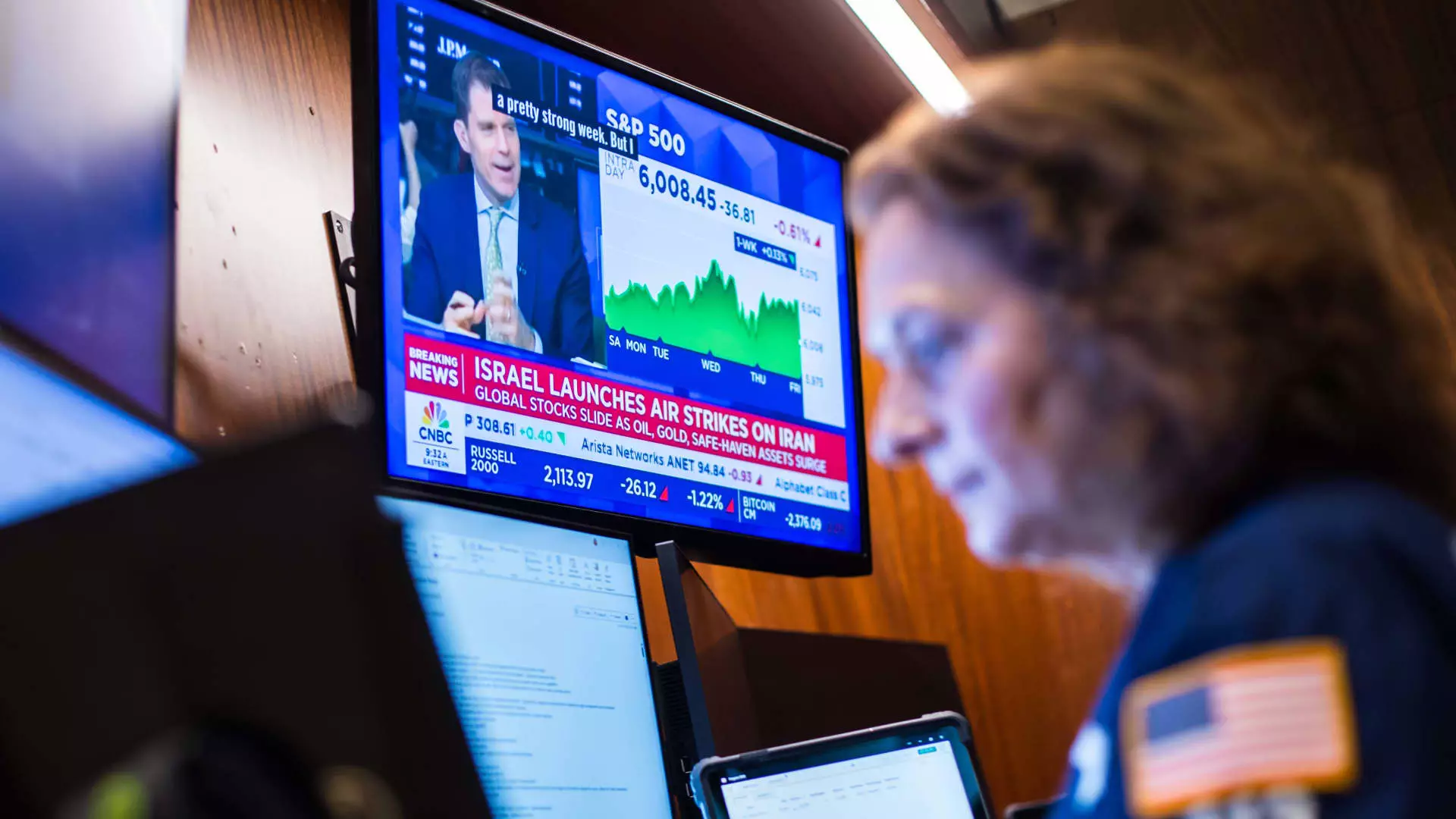What began as a serenely predictable week swiftly spiraled into chaos as news broke of Israel’s aggressive strike against Iranian nuclear sites. The reverberations of this audacious act seized global financial markets and triggered a palpable unease amongst investors. In this charged atmosphere, the fortunes of the S&P 500 and Nasdaq Composite fell by a staggering 1.13% and 1.3%, respectively, on Friday alone. Even the typically stable commodities showed their volatility; Brent crude oil gained 7%, while West Texas Intermediate (WTI) crude surged by 7.5%. A dazzling uptick in gold prices, which reached a two-month peak, indicated a frantic rush to safe-haven assets amidst the uncertainty.
Prior to this unforeseen escalation, the stock indices were poised to gracefully close out the week in the positive territory. Instead, the fallout from the military strike sent the S&P 500 and Nasdaq tumbling down 0.4% and 0.6% respectively, effectively snapping their consecutive weekly winning streaks. The U.S. dollar index felt the heat of geopolitical instability as well, experiencing a rough patch despite modest rebounds.
While some deemed it prudent to view the weakened dollar as a long-term opportunity, the volatility underscored a strong sentiment in the market that echoes through history: peace may ripple gently, but conflict incites waves of uncertainty.
Economic Indicators offer Glimmers of Hope
In the midst of geopolitical turmoil, the week also brought some flickering candles of good news concerning inflation and economic indicators. Wednesday and Thursday delivered a comforting scorecard, signaling a softened inflation rate that provided a breath of fresh air for investors. The consumer price index reflected core prices rising less than anticipated, while the producer price index for May yielded even more positive surprises. This together painted a picture of economic stability, albeit a fragile one.
The labor market, although not entirely robust, maintained an air of resilience. Weekly jobless claims remained stagnant, reflecting neither utter disaster nor sheer confidence. The entirety of economic data this week emerged as an encouraging blend for the markets, indicating a slow subsiding of inflation, which, in turn, might bolster consumer purchasing power—an essential element for economic buoyancy.
Yet the flickering light of these positive straws is often dampened by the broader picture of increasing social inequality amidst economic growth, a testament to the persistent issues plaguing our economic landscape. It begs the question: must we accept this systemic disparity as the cost of prosperity, or can we envision a more equitable recovery from these market fluctuations?
The AI Race: Dominance and Disappointment
The world of artificial intelligence remained a hotbed of excitement and disappointment, with waves of corporate developments unfolding throughout the week. This sector, undeniably one of the most pivotal drivers of financial markets, often resembles a double-edged sword, creating opportunities while simultaneously sharpening risks.
Apple opened the week with its annual developer conference, which was met with low expectations. It ultimately left many investors wanting, as the company failed to present the AI advancements that had been eagerly anticipated. In stark contrast, Meta Platforms captured attention with thrilling news: a significant investment in Scale AI alongside plans to create an ambitious “superintelligence” unit, aiming for the lofty goal of artificial general intelligence.
Nvidia’s CEO, Jensen Huang, also took center stage at the GTC event in Paris, alerting the audience to the vast untapped potential for growth in computing capacity across Europe, which he estimate might increase tenfold over the next two years. Yet, while the drumbeats of progress echoed through the halls, there remained a cautious undertone that even the most promising announcements weighed against the broader backdrop of rapid technological evolution.
Adding to this volatile mix, Oracle and Advanced Micro Devices (AMD) recorded significant updates this week. Oracle’s strong quarterly performance marked it as a beacon of resilience amid market turmoil, while its stock surged dramatically—an anomaly in this week of downturns. AMD made strides as well, announcing a new AI server chip and a pivotal partnership with OpenAI, albeit with a timeline pointing toward 2026 for its launch.
As investors navigate this rapidly shifting landscape, the constantly evolving intersection of technology and finance is fraught with both promise and peril. The real question remains: who will define the future of AI, and how will the financial markets adapt and respond to its relentless pulse?
Ultimately, the tides of geopolitical unrest, economic signals, and technological innovation create a complex mosaic that investors must traverse, each turn offering both risk and reward.

